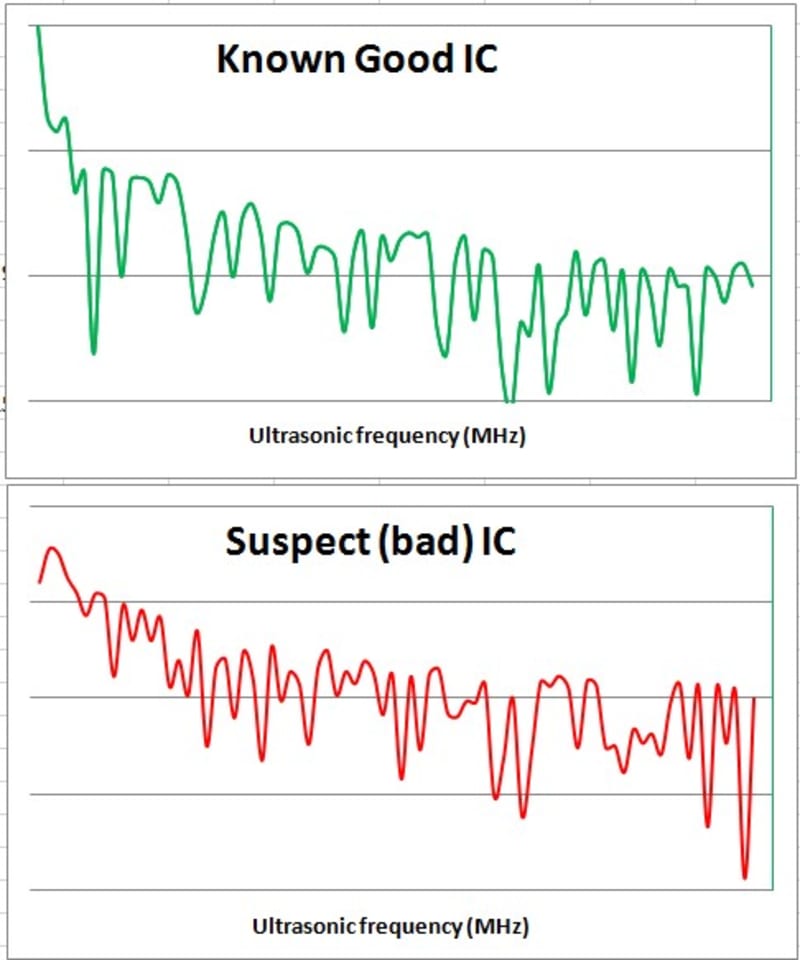Problem:
Counterfeit ICs used in critical systems are a threat to safety and security. It is difficult to identify counterfeit ICs quickly or accurately.
Solution:
Using NDT Ultrasonic Resonance Testing methods, characteristic ultrasonic spectra signatures would be made of known 'good' ICs, and a go/no-go criteria range would be developed by testing a number of 'good' parts. Suspect ICs would be tested and compared against testing criteria. Minor variations in die size, packaging materials, bond wiring, internal lead wiring, and other characteristics would show up as peaks, dips, and shifts in characteristic spectra. Since known 'good' manufacturers would use consistent materials and design, ICs of the same part number should match a small range of characteristic ultrasonic spectra. Counterfeit ICs using inferior materials, die/circuits, wiring, and bonding should have different characteristic spectra. Ultrasonic testing is nondestructive, so methods could be developed to test in-circuit parts (using ultrasonic probes) to verify assembled hardware.
Manufacturers could also design ultrasonic resonant 'watermark' structures in highly critical ICs as additional security markers. Ultrasonic 'watermarks' could be as simple as a pattern of voids or inclusions (metal/plastic/ceramic dots or slabs), which would result in complex and hard to duplicate 'watermark' spectral signatures. Lot and manufacturing data could be encoded in the spectral characteristics, as well.
Note about ultrasonic testing:
The frequency of ultrasonic waves needed for testing very small IC parts would necessarily be in the MHz range. MHz ultrasonic testing is commonly used in the aerospace industry to verify the integrity and condition of small parts.
Thank you for considering my idea.
Like this entry?
-
About the Entrant
- Name:Thomas Ives
- Type of entry:individual
- Patent status:none

